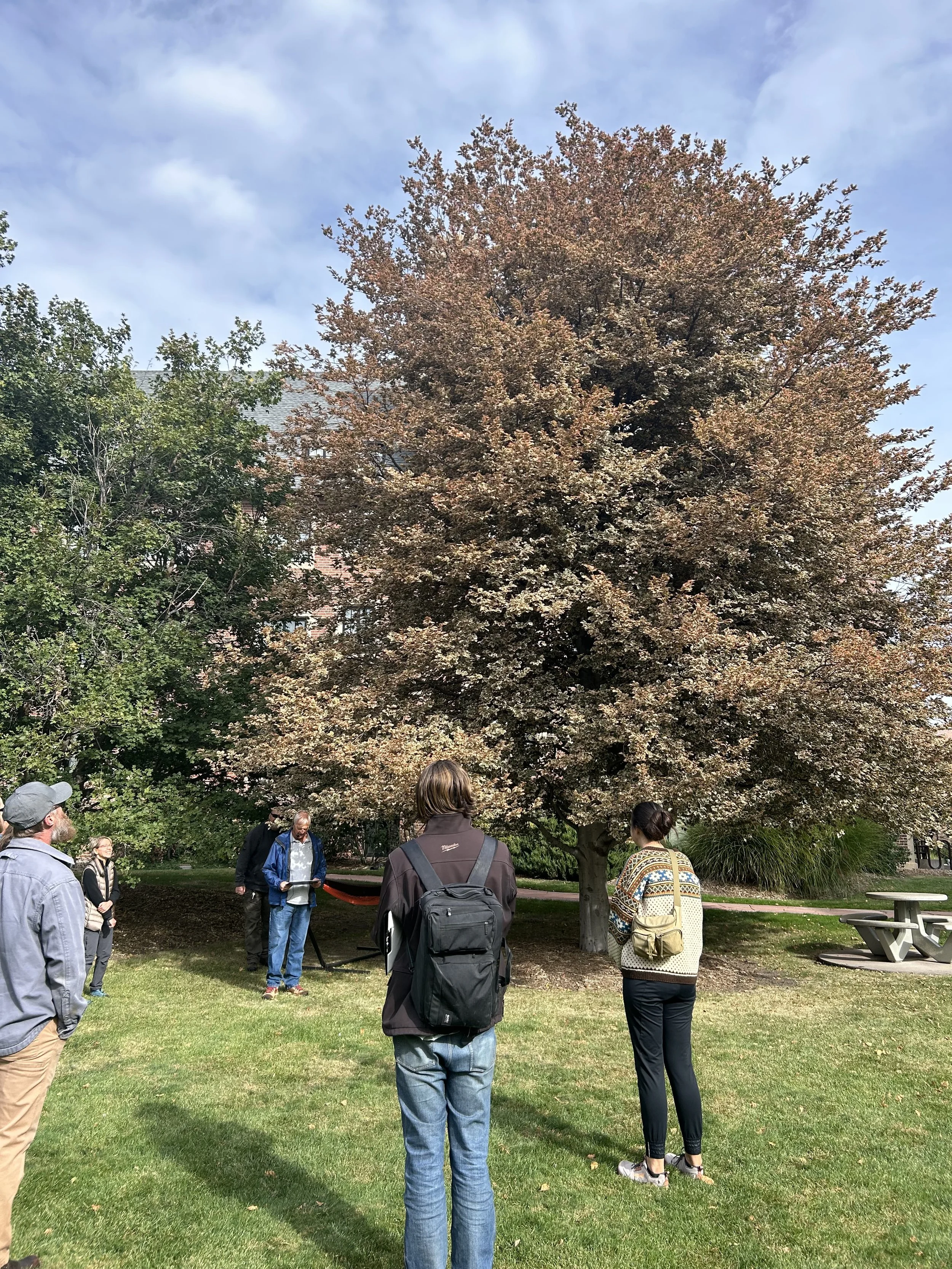European beech (Fagus sylvatica)
First place champion tricolor European beech (Fagus sylvatica ‘Roseomarginata’) in Denver at Regis University. Variety features smooth, glossy, variegated leaves with purple centers and rose and white edges.
Species info:
Leaves: Broad, simple, alternate leaves with undulating margins
Leaflets: None (simple leaves)
Leaf Surface: Lustrous dark green
Bark: Smooth, gray, and even-textured often described as “elephant hide-like”; retains its smoothness with age
Flowers: Inconspicuous, appearing in spring; male flowers in small round clusters, female flowers on short spikes
Fruit: Small triangular nuts enclosed in spiny husks
Botanical: Fagus sylvatica
Family: Fagaceae
Mature Height: 50 to 60 feet
Canopy Spread: 35 to 45 feet
Foliage Type: Deciduous
Tree Shape: Pyramidal
Flowers: Inconspicuous, spring-blooming
Fruit: Edible, but requires processing
Fall Color: Russet, golden brown
Water Use: Moderate; prefers consistent moisture, especially when young
Hardiness: Zones 4–7
Soil Preference: Prefers well-drained loam; tolerates clay and soils with pH 6.8–7.8
Wildlife Value: Nuts provide food for small mammals and birds; dense canopy offers nesting shelter
Insects and Diseases: No major insect problems; susceptible to powdery mildew and beech bark disease in some areas
Planting Recommendations: Conditionally recommended for protected sites
Information sources:
Michael Dirr, Encyclopedia of Trees & Shrubs (Timber Press, 2011)
Dayton Nurseries Landscape Plants of the Upper Midwest


